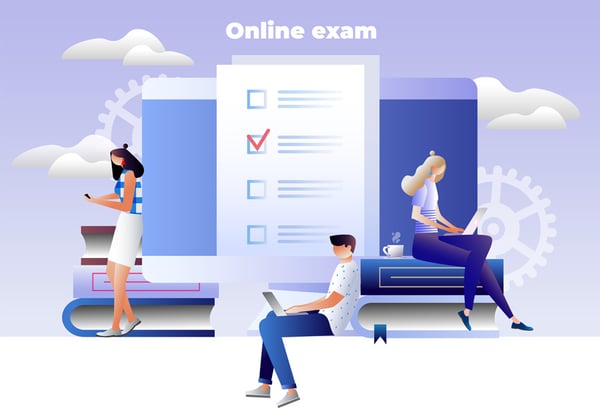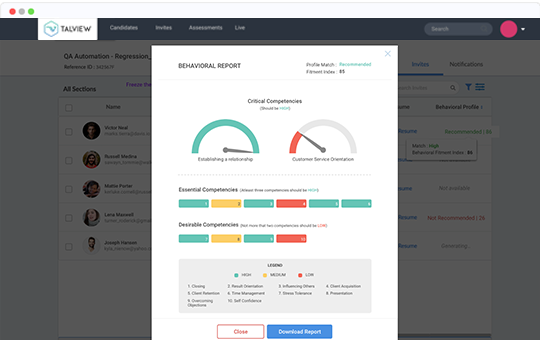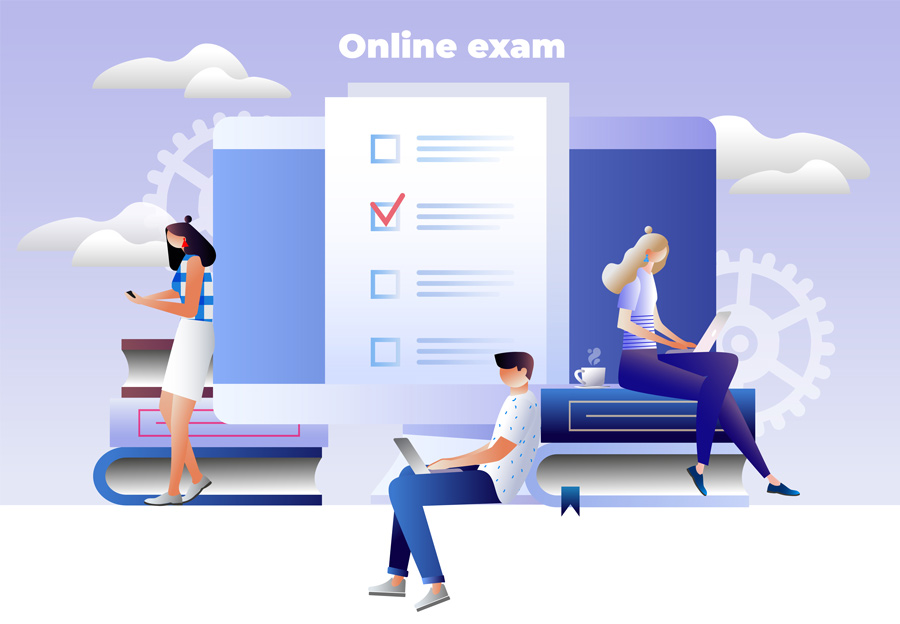In this article, I will be covering topics related to campus hiring, and how you can ace it to get the best candidates before your competitors get to them, comparing old and new methods of hiring freshers in this millennial world. The topics broadly include:
- Introduction: What Is Campus Recruitment
- Reasons for an effective Campus Recruitment Strategy
- Old Trends of Campus Hiring and Why They’re Outdated and Faulty
- Where Technology Comes In The Picture
What Is Campus Recruitment? And Why Has It Become An Essential Part Of Big Corporations?
If you don’t live under a rock you know Campus Recruitment, aka Graduate Hiring refers to the process where large companies look to fill certain vacant positions by employing students or fresh graduates from various campuses.
Now, this trend is not just prevalent in large enterprises anymore. Realizing the potential of recruiting new talent fresh in the market, now every business wants to grab the opportunity.
With the number of millennials and freshers increasing at an exponential rate, conducting graduate hiring and hiring fresh talent has become an inexplicable part of most company’s hiring process.

Reasons to have an Effective Campus Recruitment Strategy
1. Campus hiring is one of the most ground-shaking ideas that businesses have been investing in. And one of the reasons why it’s such a hit is the sheer talent pool that is available in colleges/universities.
It is so much easier to hire candidates directly from campus as the organizations have a variety of candidates with the same qualifications to choose from. From there, the organization can select the best candidate on the basis of culture fit, soft skills, etc, making the selection process more relaxed for the organizations.
When the recruiter visits campus to hire, they end up receiving a pool of applications from enthusiastic students who are eager to be picked among peers and about their first job. This helps organizations to receive a diverse and vast number of potential candidates to choose from.
2. Another reason is that with every new generation, students and freshers are getting more and more well-equipped with technology. They’re more open to learning new things and offer tech solutions to problems, as compared to baby boomers who are more hard-work driven.
This generation focuses on smart work and hands out more quality work. Hence, it’s best for organizations to hire freshers who provide quick and smart solutions to problems.
3. Hiring freshers also tends to reduce the cost and effort put in to fill a vacant position in an organization.
A regular hiring process including advertisements, word of mouth, outsourcing recruitment for the role, inviting screened candidates for interviews out of which only a handful are actually qualified for the role, demands heavy resources from organizations.
Acquiring and grooming the potential talent in your company right after graduation will eliminate the high search fees and let the company develop and promote from within which will further raise your retention rate, and in the long run, increase profits.
4. Organizations that conduct campus drives in a particular college or educational institution over the years end up establishing a strong relationship with that institution and its students.
When an organization becomes a regular recruiter from a college, it becomes easier for the students to trust you and may increase their chances of working with you. This happens because they know they can get a review from their seniors who got hired in your organization previously about the work, office culture, and other deliverables that they expect from you as employees.
This also helps increase the number of students applying for summer internships and training and projects, etc. In the long run, it also helps in building a strong pipeline for next year’s recruits as well.

5. One of the biggest advantages and the reason why organizations are actively investing in campus hiring is the loyalty that the new recruits have for their first company, the one who gave them their first break, who showed faith in their skills without prior experience. This makes them emotionally connected and automatically loyal to the organization.
Freshers are a loyal bunch who join the organization to take hold of the future talent needs of the company. Being their very first employer you will be very close to their heart.
But as with everything else in our lives, we need quicker and better results. We need to excel in it and get a big enough ROI for our efforts. There are also certain pain points that every process inherently has, that need to be addressed and/or fixed.
Old Trends of Campus Hiring
Traditional campus hiring includes a range of variables such as a number of universities and countless candidates spread across a large landscape to filter from, undefined expectations, rigorous competition among companies, the amount of time and money spent, and so on.
Other pain points of Campus Recruitment:
-
- Screening is mostly based on academic performance alone
- Limited focus on long-term potential by most organizations
- No screening for behavioral fitment
- Compromise on quality of talent
Here is a guide to help you hire B-School graduates without any trouble.
Where Technology Comes In The Picture
The average hiring time that companies usually take on campus comes to 24-72 hours. With online exams, this time comes down to a mere 0-4 hours.
On-campus hiring practices have not seen an update in a decade now. One of the most effective strategies of campus recruitment is to utilize technology. Virtual campus recruitment is changing the game for companies, enabling you to spend lesser time evaluating candidates manually. You can go to the universities to just interview screened and qualifying candidates.

With online assessment tools and gamified assessments, most campus recruiters can now save a lot of time, money, and resources. These tools ensure that the initial screening process of filtering is conducted in a systematic and scientific way, to ensure that only the candidates with an appropriate set of skills and competencies are selected for the final round of interviews.
Technological tools and software can help organizations hire the most suitable entry-level talent by using customized assessments to benchmark fresher hiring. This is a break away from the traditional methods as it delivers incredibly accurate results.
Virtual campus recruitment enables enterprises to only go to campus to take the final round of interviews of only the candidates that were filtered out by online assessments takes by them a week before the campus drive takes place. This saves the recruiters’ travel time, travel cost, and a ridiculous amount of time sifting through each application that comes.
Here are 5 key pillars of a successful campus recruitment strategy that you should implement today.
You can see a proper comparison of old and new ways of campus recruitment in our Campus Recruitment Infographic.
Listed below are some of the ways you can get the best students from campus before your competitors:
- Scaling-up Campus Hiring With Minimum Resources
- Expanding Geographic Reach for Campus Hiring
- Looking Beyond Resumes For Screening
- Holistic Evaluation of Candidates
- Enhance Candidate Experience to Build Employer Brand
- Higher Retention Rates and Better Long-term Potential Candidates
- Build MoU’s With Universities That Give Excellent Candidates Year-on-Year

Apart from these, what’s critical in order to excel at campus hiring is having a working system in place. If you have gone for campus recruitment before, you know the whole routine already. Now we break it down into three easy steps so that you never go off-track at any point of the procedure and get the best ROI:
1. Pre-Hiring (Knowing your Requirements):
This is the first step that requires you to list down all the things and assets essential to get the job done. This step consists of knowing all the job vacancies in your organization, the number of employees you require to fill the positions, how you are going to finalize the candidates, what is the selection criteria, if you have a JD in place, whether you have assessments ready for each vacant position, the number of panel members that will be going on-site, the target course you want your candidates to be from, which colleges/universities offer that course, which day you will be going on-site, etc.
2. During Campus Hiring (Assessment & Selection):
This is where all the work done in the previous step comes into action. Once you have decided on a date to visit the campus, you have to prepare an impactful introduction of your organization, your values, and what you bring to the table for the new recruits in an attractive manner.
This might be your first introduction to many of those fresh graduates. Hence, a remarkable introduction can ensure that you get the top layer of students interested in your organization.
Whereas, if this is not your first time or you are a regular face in the campus, you need to list down all the previous students hired by you and their current position, their growth, and development in your organization, along with a hint of maintaining good relations with the campus.
You can shed some light on the various projects or social initiatives your organization is taking. It’s not just a PPT, it’s the time when you’re meeting all the students for the first time - the impact has to be lasting.
Once that is done, comes the time for screening from the pool of applications. Now you can go for the old way of going through all resumes manually or you could save some time and hold a preliminary online assessment for all those who apply. This can give you time to focus on the ones who would actually fit the JD and the organization.
There are tools and software that provide you with pre-built online exams that can be conducted a few days before the actual campus drive. In this case, you only have to visit the campus or college to interview all qualified candidates and seal the deal.
Here is an Online Hiring Playbook for your perusal.
Some of the new and upcoming ways of holding campus recruitment process are:
-
- Proctored online assessments on mobile/laptops for fraud-proof results
- Video Interviews for the first round: Know your candidates
- Go to universities/colleges or conduct Online Live Interviews Remotely: Giving you ample time to speak to each candidate
- Get Behavioral Fitment Report as Input
Once you have a list of qualified candidates, with a detailed report of their performance, their skillset, and cultural fit, you can hold a structured interview for the select few - these should be effective, standardized, and fair, to begin with. You can even record these, to assess later.
3. Post-Hiring (Analysis & Campus Learning):
The hard part is now over, but there’s still some work left. Once you catch hold of the best performers on the campus, you need to make sure you offer them attractive packages so they can’t resist taking your offer. During campus placement, students usually do not sit for just one company interview, so you need to make sure you stand out.
When you have finalized and offered the selected candidates, make sure you have a nice and smooth onboarding process in place. Communicate to them what the next step is and how they can reach out to you for any queries, and the rest of the details so they know they made the right decision. Keep all documents ready to hand out to finalized candidates.
Talview is one of the tools offering a complete kit to guide you through campus placements by leveraging artificial intelligence to ease your burden and save you time.
Here’s how:
- Company Engagement Strategy - Help create a Company Engagement Strategy intended for the organization to create a strong college base prior to campus hiring.
-
- Early nurture webinars about the organization and what they do
- Onsite engagement achieved by direct sessions by successful, prominent employees
- Challenges/Competitions (coding challenges, business case challenges, etc.)
- 360 degree Virtual Tour of the company to get a glimpse of the company without actually visiting it.
-
- Assessment and Evaluations - Engagement strategies in the final year are rigorously persistent and more frequent in nature. These engagement strategies help the employer nurture, identify and adopt promising talent in a streamlined manner.
-
- Utilize Talview Screening and Selection tools using Assessments, Video Interviews, or Live Interviews. Screen all applications through the Talview platform and send them automated proctored assessments that can be taken remotely. Once done, the tool will analyze their performance on the basis of the benchmarks created by you, after which you will receive automated reports right from there.
- These assessments are also recorded to help you re-watch the candidates' performance and share with other decision-makers to make an informed decision. It also helps make the tests cheat-free.
-
- Use Asynchronous Video Interviews to provide a chance for every candidate to express themselves without having to give in to the pressure of assessments.
-
- Ask questions that help you review their communication skills, cultural fitment, and passion for the role.

- Use Talview Behavioral Insights to evaluate team player skills, learning ability, leadership potential, and other critical behavioral competencies deemed important for the role.
- Ask questions that help you review their communication skills, cultural fitment, and passion for the role.
-
Click here if you would like a free demo of the product!







Leave a Reply